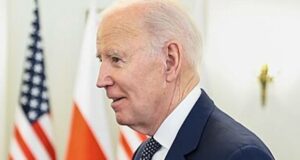President Trump recently released an ambitious, 44-page plan to drive down prescription drug prices. The blueprint relies, in part, on negotiating and enforcing trade deals to prevent other countries from freeloading off of American researchers.
That’s a smart strategy. Right now, most of our trading partners impose government price controls on drugs. Ensuring that these nations pay fair market value for medicines would spur additional research spending by U.S. drugmakers. Ultimately, this process would lead to more new drugs, forcing manufacturers to compete for market share by continually lowering their prices.
The end result? Cheaper, more advanced drugs and more choices for American patients.
The U.S. is a pharmaceutical powerhouse. Our research companies invest about one-fifth of their revenues into research and development, more than any other industry does. Between 2001 and 2010, they produced 57% of the world’s new chemical entities.
Developing a new drug is expensive. On average, it costs $2.6 billion and takes a decade of hard work. The burden of paying for this research and development falls disproportionately on Americans. According to a 2018 report by the Council of Economic Advisers, the U.S. market funds nearly half of the world’s medical research and development.
Many countries, especially ones with single-payer health care systems in which the government purchases medicines, arbitrarily set prices instead of relying on competitive market-based prices.
In Canada, for instance, the Patented Medicine Prices Review Board caps drug prices at the median price paid in a handful of other industrialized countries. In the U.K., the National Institute for Health and Care Excellence refuses to cover many advanced drugs at all. Japan lowers drug prices every two years by administrative fiat and may cut prices even more often.
These price controls prevent adequate funding for research and development. A U.S. Commerce Department report found that if price-controlled nations instead paid competitive market prices, global research and development spending would increase by up to $8 billion annually, leading to the development of four additional drugs each year.
A recent economic analysis from Precision Health Economics shows that eliminating price controls would lead to the creation of eight to 13 new drugs annually by 2030.
If U.S. companies earned more revenue from foreign nations, then the companies could spend more on R&D. This would result in new treatments and inject more competition into the U.S. drug market, leading to lower prices for patients.
Consider what happened with the numerous next-generation hepatitis C medicines released in recent years. These revolutionary drugs cure up to 99% of patients. The first medicine gained FDA approval in late 2013 and debuted with a list price of $84,000 for a full course of treatment. Over the next four years, several competing drugs flooded the market.
Prices subsequently dropped 70%, as manufacturers heavily discounted their cures to win market share.
By strengthening the North American Free Trade Agreement (NAFTA) and striking strong trade deals with Japan, the U.K., and other allies, the U.S. could level the playing field for domestic drug companies operating abroad and increase competition to give American patients and payers more options and lower prices.
–By Charles Boustany
Charles Boustany is a retired physician and former congressman from Louisiana.
 Metro Voice News Celebrating Faith, Family & Community
Metro Voice News Celebrating Faith, Family & Community 







